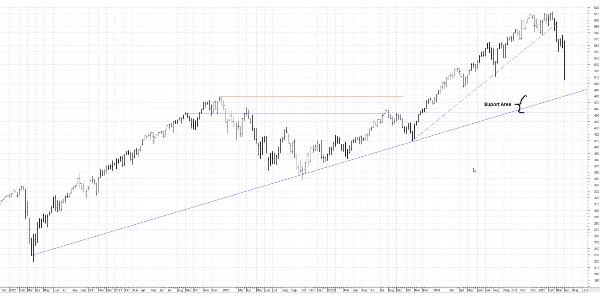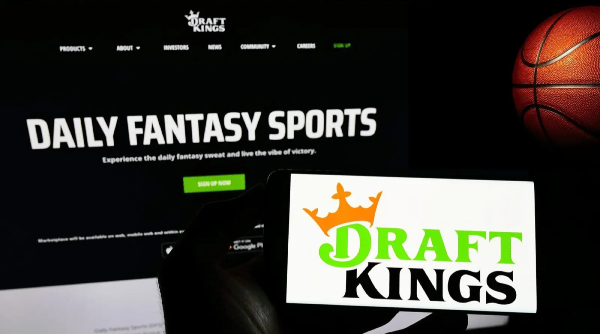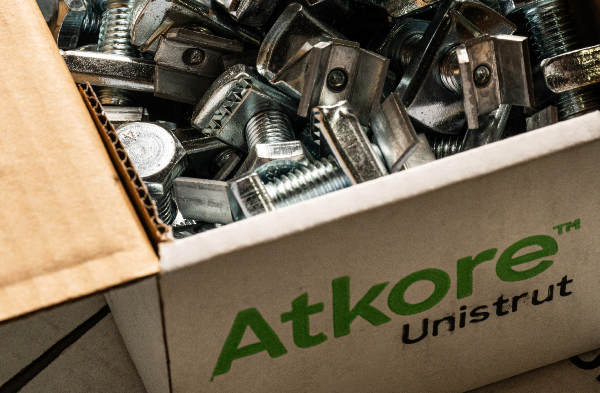Timber REITs (Real Estate Investment Trusts) generate income through a combination of timber-related activities and strategic land management. Here’s a breakdown of their primary revenue streams:
Key Takeaways:
The key ways Timber REITs make money are:
- Timber Harvesting
- Land Sale and Leasing
- Carbon Credits and Conservations
Timber Harvesting:
Timber harvesting forms the backbone of revenue generation for timber REITs, as it directly ties to the sale of raw materials essential to multiple industries. Companies like Weyerhaeuser and Rayonier, for instance, manage vast expanses of forestland across North America, where they practice sustainable forestry to ensure steady timber production. This harvested wood becomes the building blocks for residential and commercial construction, with products such as dimensional lumber used for framing and plywood for structural support. Additionally, harvested timber finds applications in paper manufacturing, producing everything from office supplies to packaging materials. Such versatility ensures a constant demand for timber, making harvesting operations a reliable income stream for these REITs.
Timber REITs also strategically time their harvesting cycles to capitalize on fluctuating timber prices. For example, during periods of high demand in the housing market, companies may increase harvest volumes to supply construction-grade lumber, taking advantage of elevated prices. On the other hand, when market conditions are less favorable, these REITs can opt to leave trees standing, allowing them to grow in value while reducing operational costs. This flexibility, paired with efficient land management practices, enables timber REITs to maintain profitability even during economic downturns. For investors, this adaptability highlights the robustness of timber REITs as a long-term investment option.
Land Sales and Leasing:

Land sales and leasing are lucrative avenues for Timber REITs, as these practices enable them to unlock the value of their vast landholdings beyond timber production. For example, companies like Rayonier and PotlatchDeltic are known for selling select parcels of land for residential or commercial development. These sales often occur in areas with high population growth, where the demand for real estate is surging. Rayonier, in particular, has successfully marketed properties in the southeastern United States, catering to housing developers. Similarly, PotlatchDeltic has tapped into the recreational real estate market, offering land for private ownership in scenic regions, such as near lakes or forests, which appeal to outdoor enthusiasts.
In addition to land sales, leasing provides Timber REITs with a steady stream of income while retaining ownership of their valuable assets. Weyerhaeuser, for instance, leases its forestlands to hunting clubs, providing outdoor enthusiasts with exclusive access to their properties during hunting seasons. The company also leases land for renewable energy projects, such as wind and solar farms, further diversifying its revenue sources. Additionally, Timber REITs may lease land for resource extraction, such as mining or oil and gas exploration, where applicable. These strategies showcase how Timber REITs maximize the financial returns from their landholdings while maintaining flexibility in their long-term land management plans.
Carbon Credits and Conservation
Timber REITs are increasingly capitalizing on the growing demand for sustainability by participating in carbon credit programs. These programs allow companies to monetize the carbon-absorbing capacity of their forests, a process critical in offsetting industrial carbon emissions. For instance, Weyerhaeuser, a prominent timber REIT, actively participates in carbon markets by maintaining vast forestlands that act as natural carbon sinks. By preserving these areas and ensuring sustainable management practices, Weyerhaeuser generates carbon credits, which it can sell to corporations seeking to meet environmental regulations or achieve carbon neutrality. This approach not only diversifies their income streams but also aligns the company with global efforts to combat climate change.
Beyond carbon credits, timber REITs promote conservation to maximize the environmental and economic value of their landholdings. By preserving ecosystems and implementing sustainable forestry practices, they ensure long-term forest health while meeting investor demands for socially responsible investment opportunities. For example, companies like Rayonier actively integrate conservation efforts by setting aside significant portions of their forestlands for wildlife protection and biodiversity. This dual commitment to conservation and carbon market participation positions timber REITs as both profitable investments and contributors to global environmental sustainability goals. Through these initiatives, timber REITs effectively combine profitability with purpose, making them attractive to eco-conscious investors.
Final Thoughts
Timber REITs offer diverse revenue streams and strategic opportunities, making them compelling investments for those seeking to balance profitability with sustainability. Through timber harvesting, companies like Weyerhaeuser and Rayonier capitalize on the demand for wood products across construction and manufacturing industries while maintaining flexible strategies to adapt to market fluctuations. Land sales and leasing, as seen with PotlatchDeltic's recreational real estate efforts and Weyerhaeuser's hunting land leases, further amplify their financial gains by leveraging their expansive landholdings for development, recreation, and resource extraction.
Moreover, timber REITs are aligning with global sustainability efforts through carbon credit programs and conservation initiatives. By preserving forests, companies like Rayonier contribute to biodiversity while monetizing their environmental impact through carbon credits, attracting eco-conscious investors. These multifaceted approaches to income generation and land management highlight how Timber REITs balance economic growth with environmental stewardship. For investors seeking long-term returns and socially responsible opportunities, Timber REITs stand out as versatile and impactful choices.
Read More:






























Timber REITs (Real Estate Investment Trusts) generate income through a combination of timber-related activities and strategic land management. Here’s a breakdown of their primary revenue streams:
Timber Harvesting:
Timber harvesting forms the backbone of revenue generation for timber REITs, as it directly ties to the sale of raw materials essential to multiple industries. Companies like Weyerhaeuser and Rayonier, for instance, manage vast expanses of forestland across North America, where they practice sustainable forestry to ensure steady timber production. This harvested wood becomes the building blocks for residential and commercial construction, with products such as dimensional lumber used for framing and plywood for structural support. Additionally, harvested timber finds applications in paper manufacturing, producing everything from office supplies to packaging materials. Such versatility ensures a constant demand for timber, making harvesting operations a reliable income stream for these REITs.
Timber REITs also strategically time their harvesting cycles to capitalize on fluctuating timber prices. For example, during periods of high demand in the housing market, companies may increase harvest volumes to supply construction-grade lumber, taking advantage of elevated prices. On the other hand, when market conditions are less favorable, these REITs can opt to leave trees standing, allowing them to grow in value while reducing operational costs. This flexibility, paired with efficient land management practices, enables timber REITs to maintain profitability even during economic downturns. For investors, this adaptability highlights the robustness of timber REITs as a long-term investment option.
Land Sales and Leasing:
Image by saddleroad from Pixabay
Land sales and leasing are lucrative avenues for Timber REITs, as these practices enable them to unlock the value of their vast landholdings beyond timber production. For example, companies like Rayonier and PotlatchDeltic are known for selling select parcels of land for residential or commercial development. These sales often occur in areas with high population growth, where the demand for real estate is surging. Rayonier, in particular, has successfully marketed properties in the southeastern United States, catering to housing developers. Similarly, PotlatchDeltic has tapped into the recreational real estate market, offering land for private ownership in scenic regions, such as near lakes or forests, which appeal to outdoor enthusiasts.
In addition to land sales, leasing provides Timber REITs with a steady stream of income while retaining ownership of their valuable assets. Weyerhaeuser, for instance, leases its forestlands to hunting clubs, providing outdoor enthusiasts with exclusive access to their properties during hunting seasons. The company also leases land for renewable energy projects, such as wind and solar farms, further diversifying its revenue sources. Additionally, Timber REITs may lease land for resource extraction, such as mining or oil and gas exploration, where applicable. These strategies showcase how Timber REITs maximize the financial returns from their landholdings while maintaining flexibility in their long-term land management plans.
Carbon Credits and Conservation
Timber REITs are increasingly capitalizing on the growing demand for sustainability by participating in carbon credit programs. These programs allow companies to monetize the carbon-absorbing capacity of their forests, a process critical in offsetting industrial carbon emissions. For instance, Weyerhaeuser, a prominent timber REIT, actively participates in carbon markets by maintaining vast forestlands that act as natural carbon sinks. By preserving these areas and ensuring sustainable management practices, Weyerhaeuser generates carbon credits, which it can sell to corporations seeking to meet environmental regulations or achieve carbon neutrality. This approach not only diversifies their income streams but also aligns the company with global efforts to combat climate change.
Beyond carbon credits, timber REITs promote conservation to maximize the environmental and economic value of their landholdings. By preserving ecosystems and implementing sustainable forestry practices, they ensure long-term forest health while meeting investor demands for socially responsible investment opportunities. For example, companies like Rayonier actively integrate conservation efforts by setting aside significant portions of their forestlands for wildlife protection and biodiversity. This dual commitment to conservation and carbon market participation positions timber REITs as both profitable investments and contributors to global environmental sustainability goals. Through these initiatives, timber REITs effectively combine profitability with purpose, making them attractive to eco-conscious investors.
Final Thoughts
Timber REITs offer diverse revenue streams and strategic opportunities, making them compelling investments for those seeking to balance profitability with sustainability. Through timber harvesting, companies like Weyerhaeuser and Rayonier capitalize on the demand for wood products across construction and manufacturing industries while maintaining flexible strategies to adapt to market fluctuations. Land sales and leasing, as seen with PotlatchDeltic's recreational real estate efforts and Weyerhaeuser's hunting land leases, further amplify their financial gains by leveraging their expansive landholdings for development, recreation, and resource extraction.
Moreover, timber REITs are aligning with global sustainability efforts through carbon credit programs and conservation initiatives. By preserving forests, companies like Rayonier contribute to biodiversity while monetizing their environmental impact through carbon credits, attracting eco-conscious investors. These multifaceted approaches to income generation and land management highlight how Timber REITs balance economic growth with environmental stewardship. For investors seeking long-term returns and socially responsible opportunities, Timber REITs stand out as versatile and impactful choices.
Cover Image by Manfred Richter from Pixabay